Running shoes are specially designed for running purposes. So make sure to keep in mind the purpose before buying any shoes. Similarly, gender is another important factor to consider while buying shoes.
Women’s running shoes are exclusively designed for women’s feet; that’s why they are softer, lighter, and designed to fit the female-shaped foot. To get the best running shoes, choose a proven design that has been tested by professionals.
With so many options out there, choosing and buying perfect running shoes can be a daunting task. I hope this list of 10 recommended running shoes for women can help you find what you are looking for.
- Saucony Women’s Omni Iso 2
- Nike Air Zoom Pegasus 37
- Salomon Women’s Sonic 3
- Adidas Ultraboost 20
- Under Armour HOVR Infinite 2
- Asics GT 2000 7 Trail
- Altra Escalante Racer 19
- Adidas Alphabounce+
- Brooks Adrenaline GTS 20
- Brooks Ghost 12
How to Choose a Running Shoe
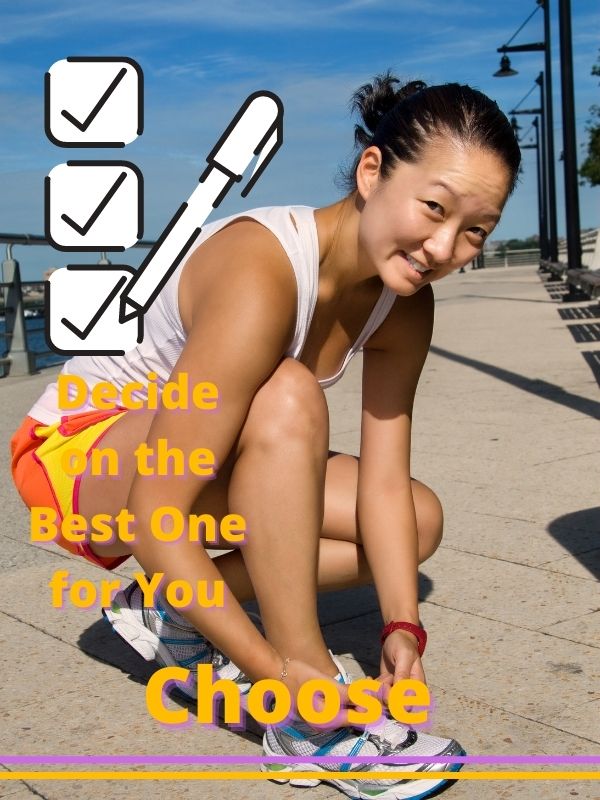
Though there is no single running shoe that is perfect for everyone here I will explain a few things that may help you in choosing your perfect running shoes.
1. Choose Gender-Specific Shoes
If you are a woman, make sure to buy women’s running shoes as they are designed to fit your feet. Women’s running shoes are usually soft and light and are ergonomically designed for a woman-shaped foot.
2. Choose Running Specific Shoes
You may find that running shoes just look like other sneakers, but remember, they do have some specialized technology that helps you run. While you run, your foot hits the ground in the same way with each step.
Therefore, running shoes are designed in a way to prevent injury with this repetitive motion. Also, the design helps you to run forward with great ease. These shoes offer cushioning that helps in shock absorption.
3. Choose The Right Type Of Running Shoes
So when you decide you are buying running-specific shoes, you further need to identify the right running shoes. By the right type of running shoes, I mean the shoes that serve your purpose.
Different running shoes are designed for different purposes. Choose the one based on the kind of running you want to do. You can choose from everyday running shoes, lightweight running shoes, or trail running shoes.
Everyday running shoes are the most versatile and most durable and can handle almost all types of running people do. These tend to have more cushion and are good for longer distances.
Lightweight running shoes are comparatively less durable and less cushioned, but they are best for short races and workouts.
While trail running shoes are perfect for running on rocky trails and upon dirt because the lugs on the bottom of these shoes provide better grip. They also tend to have a durable upper.
4. Go Half A Size Up
While choosing a running shoe, make sure the shoe has a finger’s width of space at the top. This extra space will let your feet expand when they get hot. You can also go up half a size from your regular shoe size.
5. Gait Analysis
Before buying a new pair of running shoes, I would highly recommend taking yourself to a specialist to have your gait looked at. It will help you know if you are a neutral runner or you pronate.
If can set up your camera correctly, you can record and analyze your gait and foot strike pattern. Using a treadmill may be the best way to start.
If you pronate, you will need some extra support on the inside of your feet. You can also do the gait analysis at home, which will help you choose the best shoes for you.
6. Pay For Quality Shoes
When you buy shoes, higher-priced shoes do have more comfort and technological features, but that doesn’t mean buying the most expensive shoes for your run. Also, do not go for a very low-priced shoe, rather, pay attention to the quality of running shoes.
High-quality running shoes generally range from $100 to $250. You can buy high-quality running shoes in the $110 to $150 price range, which is suitable for most runners’ daily needs.
7. Know The Lingo
There are certain lingos related to shoes that you should be aware of while choosing shoes. I will explain a few of them here.
- Stack Height: The stack height term is usually used to refer to the amount of material between the foot and the ground. It ranges from barefoot, minimally cushioned, to maximal, highly cushioned.
- Heel-toe drop: heel-toe drop or heel-toe offset refers to the difference between the amount of material under the heel and the amount of material forefoot of the shoe.
- Pronation control: Running shoes are either neutral or stability shoes. Neutral shoes are best for most runners, while stable running shoes hold technology to correct overpronation. Overpronation occurs when the ankle rolls inward with each step, thus increasing the chances of injury.
When Should You Go To a Running Shoe Store?
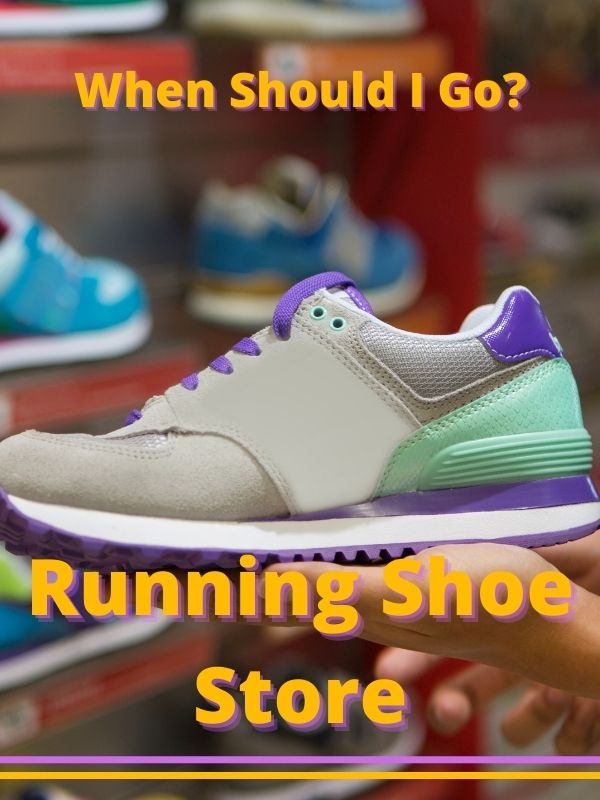
As a runner saying goodbye to your favorite running shoes can be a challenging thing to do. However some runners need the slightest excuse to get a new pair since there are so many great-looking models out there. On the contrary, some runners wear shoes that look like they’ve been worn for decades, but they refuse to let them go off.
The most common question that many runners and athletes have in mind is, “when they should go to a running shoe store?” to answer this question, I have a list of signs that will help you know when your running shoes are truly done. But let’s first see how long-running shoes should last.
How long should running shoes last?
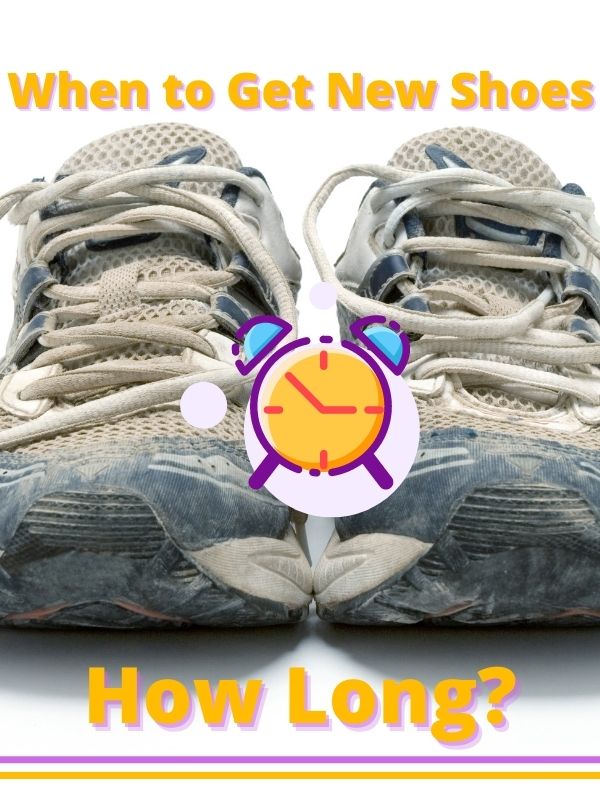
How long a running shoe should last varies, but as a guide, I would say, in proper conditions, they should last between 500 and 750km. This is not a hard and fast rule, as it depends on whether you are a professional, seasoned, or casual runner. In the case of a professional runner, you need to change your running shoes more frequently than a casual runner who runs for fun.
Every runner and their shoes are different, so here are some major signs to look out for to know if it’s the right time to say goodbye to your running shoes.
1. The Sole
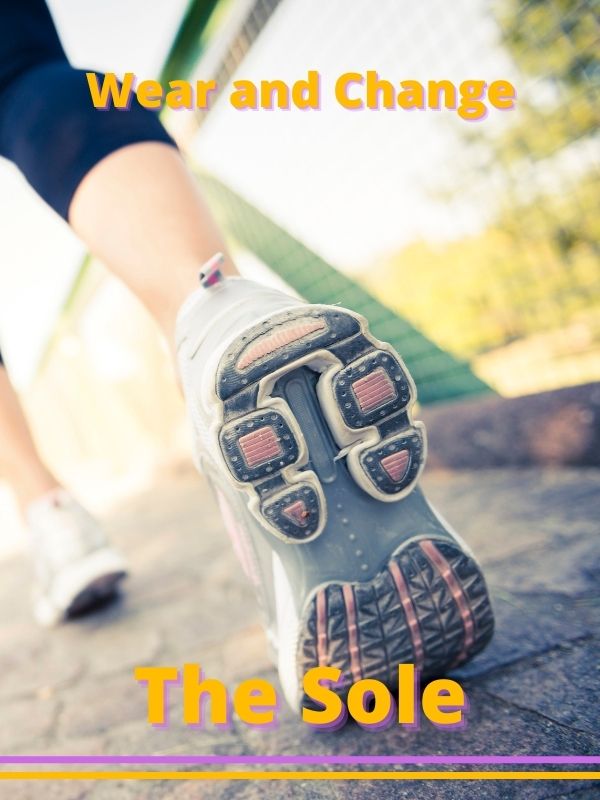
The sole is one of the obvious signs to look for while replacing your running shoes. The overall change in the shape of the sole and wear from running are the main indicators for a replacement.
This is also a little tricky because some parts of the shoe show greater wear than the other parts of the shoe. When the midsole of your running shoe’s sole wears through, it gives you signs that your shoes are beginning to be compromised, and it’s the right time to check out a new pair.
2. Upper Abrasion on Your Running Shoe
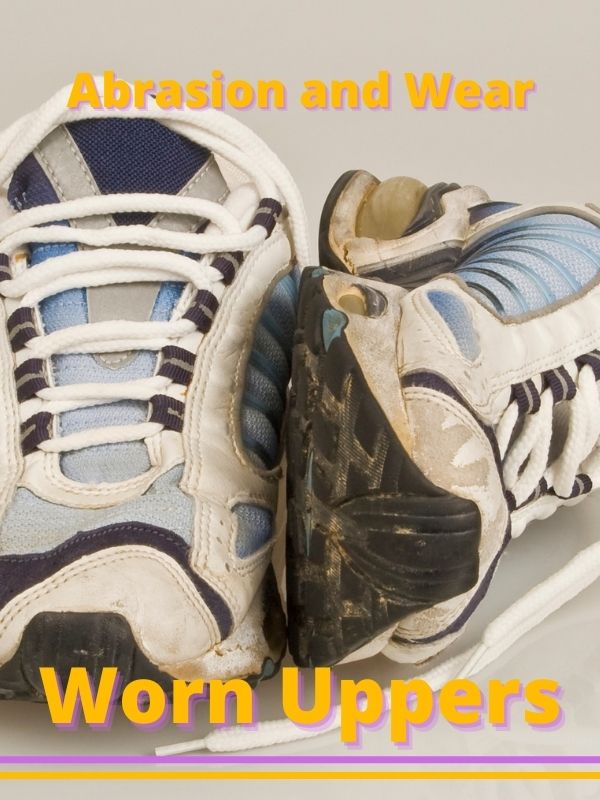
If the sides of your running shoes are worn out, but the sole is still in good condition, that means you have probably gotten the wrong size for your foot.
You might have got the right length and shoe size, but with “flat” feet or swollen feet the sides can stretch more and wear out quicker. If this happens to you, I would suggest going a half-size larger or get a wider shoe if they offer one.
If you have wide feet stretchy laces may help your foot adapt to a narrower shoe, although it all depends on how tight it is. If the problem of the side’s abrasion continues, you may need to consider changing socks, the insoles or get new shoes.
3. Heel Cup Fraying
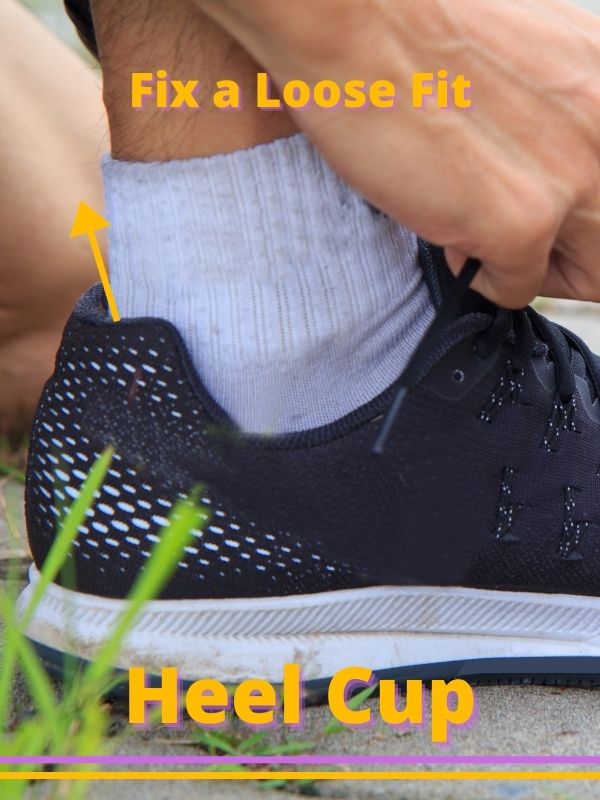
Sizing mismatch can also cause an early breakdown of the heel. Friction when running can impact our foot health. If your ankle is slipping and starting to coming out of your shoe, your shoe’s heel cup will fray.
In this case, a simple hack is to tighten and retie the shoe’s laces may provide the support needed to prevent the ankle and the heel from slipping.
Another reason your foot may be loose is your shoe is too long or too wide. If this happens, wearing thicker socks could help, or adding another insole might make a difference.
Be aware that running for an extended period with a slightly loose shoe can create blisters that may not only wear down your shoes and socks but cause you a lot of pain later on. To avoid this, I recommend getting the right fit the first time.
4. More Than Out Of Eyesight
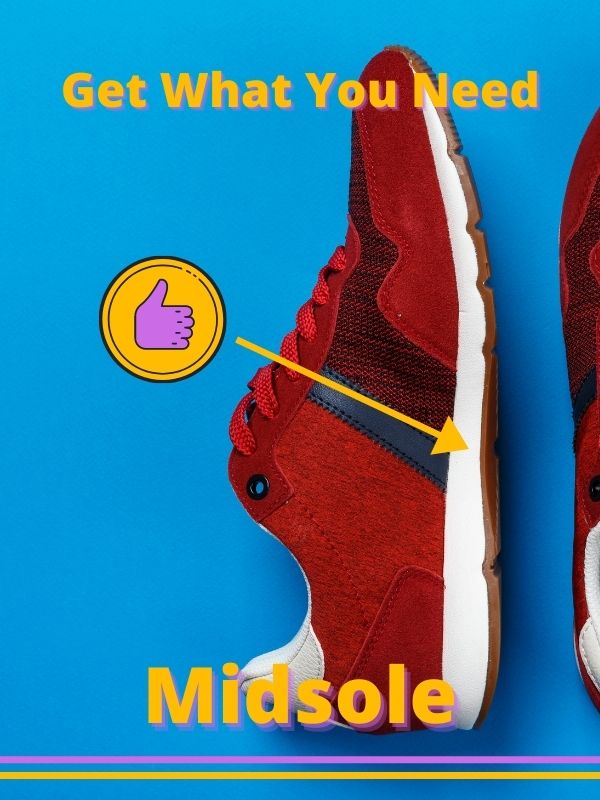
Sometimes, the shoe’s upper may look new, but the shoe’s insole and midsole have begun to be compromised. The loss of springiness of the sole is a sign that the midsole of your shoe has compressed and can no longer absorb the energy it once did.
Some shoes use denser foams that last longer and these shoes can last a lot longer as long as the outsole also hasn’t worn away.
With time all shoe’s soles begin to break down and can’t protect our joints as well. That’s why pros will always get good-quality shoes and replace them often.
Tip: Find out what material the midsole is made of and how well this material stands up over time.
You could try poking and squeezing the sole to get a feel for it (and they may initially feel great), but some shoes don’t hold up well over time (as has been my experience) because of the internal structure of the midsole. A tried and true running shoe is likely your best bet.
5. Pain and Injury
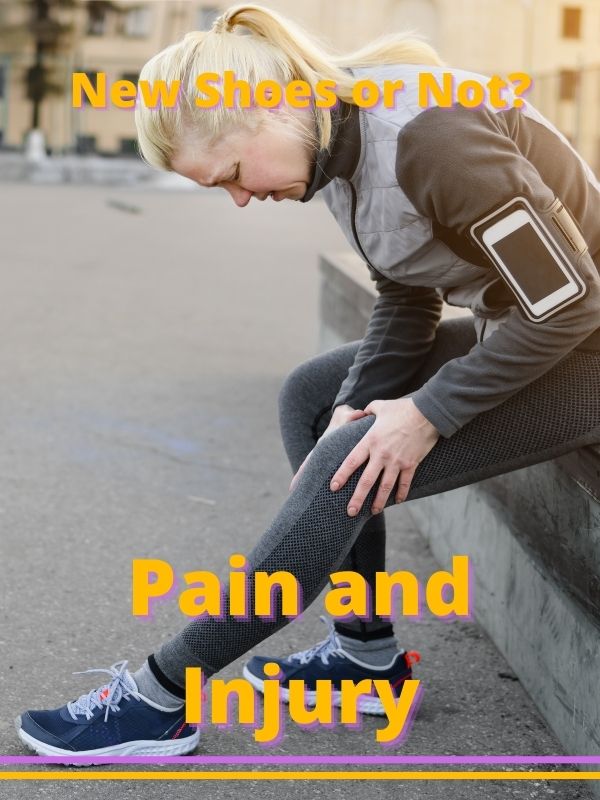
Besides all other signs, a major sign that should never be ignored is looking for pain and injury. A new and good pair of running shoes will make you feel as good as you begin running with no pain.
If you feel pain and soreness in your shins, feet, and back that you hadn’t had before, your shoes may be part of the problem.
Always consult your doctor when you have pain, and consider if your shoes may be part of the problem. Are you running too much, had your shoe too long. or running with bad form?
If you think it’s time for new shoes, try going to a running shoe store and buying yourself a new pair of quality shoes. This may be one way to judge if your shoes are the reason for your pain.
Tip: Always listen to your body and take time to heal when pain occurs.
6. Ask a Professional Runner
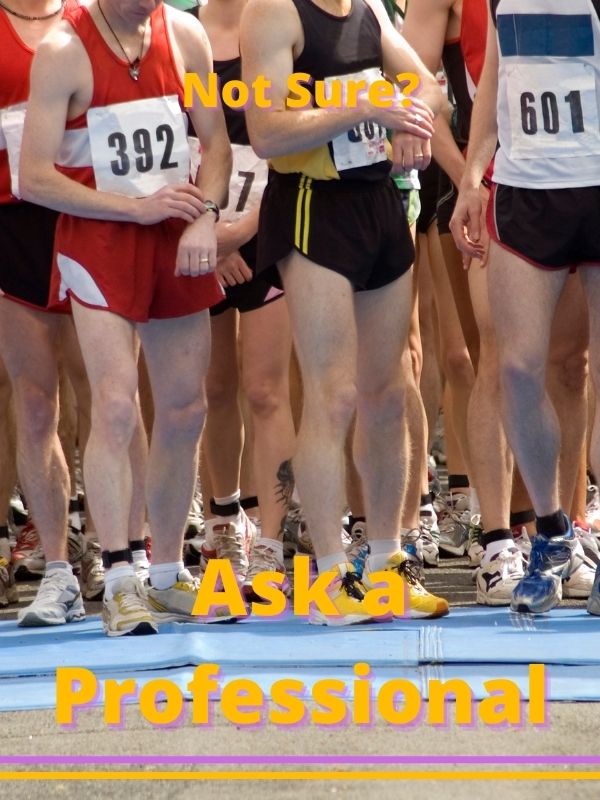
If you still aren’t able to judge, the least you can do is asking a running expert or a local running shoe store for their opinion about your current running shoes and their life.
I would suggest having your current running shoes on to make it easier for them to see where the damage has happened and ensure the next running shoe addresses any damage.
If the look of the shoe is all that matters, then it would be hard to justify the replacement of your running shoes. Because the current shoes are working just fine, then it’s all that matters to you despite some wear down and damage.
How often you should change your running shoes depends on the shoe itself. What can be important is having two pairs of shoes if you run often. This helps the midsole have time to expand fully and helps protect your joints.
After a certain point of use, the structural integrity of the shoe gives you some real reasons for replacement, sometimes indicated by the heel or joint discomfort.
In simple terms, if a shoe is not designed well, there is a greater risk of injury the more you run.
Top 10 Women’s Running Shoe
In this section, I will discuss the top 10 women’s running shoes their major attributes, including weight, heel to toe drop, arch type, pronation type, and the reasons to buy them. I hope this may help you in choosing the one that suits your requirements.
1. Saucony Women’s Omni Iso 2
AD
The first one on my list of recommendations is Saucony Omni ISO 2. Let’s first discuss a few main characteristics.
- Weight: Women 281g
- Heel-toe-drop: 8mm
- Pronation Type: Overpronation
- Arch type: Medium arch
Reasons to Buy Saucony Omni ISO 2
- I like these shoes for several reasons, but the major one would be their good-looking design.
- Along with its good design, the shoe gives an excellent fit to the foot and is extremely supportive and comfortable.
- Saucony Omni ISO 2 has a wide toe box, so I would recommend these shoes to people looking for wide toe box shoes.
2. Nike Air Zoom Pegasus 37

The second one on my list is Nike Air Zoom Pegasus 37 so let’s see the main attributes of these shoes.
- Weight: women 297g
- Heel-toe-drop: 10mm
- Pronation type: Neutral pronation
- Arch type: High arch
Reasons to Buy Nike Air Zoom Pegasus 37
- These shoes are extremely responsive and versatile. People looking for running shoes that are cushioned and offer springiness will be happy with these shoes.
- I recommend Nike Air Zoom Pegasus 37 for People who want a trainer that can be used for all the sports activities they are involved with for running.
- I think these shoes might help people who need great gripping power and shoes that are durable.
3. Salomon Women’s Sonic 3Balance
AD
The next running shoes for women that I will be talking about are Salomon Women’s Sonic 3. Let’s see some primary attributes of these shoes:
- Weight: women 216g
- Heel-toe-drop: 8mm
- Pronation type: Neutral pronation
- Arch type: High arch
Reasons to Buy Salomon Women’s Sonic 3
- Salomon Women’s Sonic 3 is also a good option for people looking for a wide toe box. So if you have wide toes or are suffering from swollen feet, I think these shoes might help you.
- Another reason to buy these shoes would be the comfort level. These shoes are extremely comfortable and durable.
- I like these shoes simply because they are multifunctional. You can use them for half marathons as well as for road and trail running activities.
4. Adidas Ultraboost 20

AD
The major attributes of these shoes are:
- Weight: women 309g
- Heel-toe-drop: 10mm
- Pronation type: Neutral pronation
- Arch type: High arch
Reasons to Buy Adidas Ultraboost 20
- These shoes are one of my favorites on the list since they are great-looking shoes.
- They are rated very high with runners as a daily runner because of the soft ride and good durability.
- These shoes have good traction, good cushioning, and can last for a good period of time.
5. Under Armour HOVR Infinite 2
AD
Some major characteristics of these shoes are:
- Weight: women 300g
- Heel-toe-drop: 8mm
- Pronation type: Neutral pronation
- Arch type: High arch
Reasons to Buy Under Armour HOVR Infinite 2
- Under Armour HOVR Infinite 2’s is one of the best shoes on this list as its midsole unit returns energy to the foot that energizes your performance.
- If you are someone who is looking for cool-looking shoes, I would recommend these shoes because of their aesthetics.
- The upper unit of these shoes provides the traits of breathability as well as heel security.
6. Asics GT 2000 7 Trail

AD
Some major attributes of these shoes are:
- Weight: women 246g
- Heel-toe-drop: 10mm
- Pronation Type: Overpronation
- Arch type: Medium arch
Reasons to Buy Asics GT 2000 7 Trail
- Asics GT 2000 7 Trail might be a good option for people who need a durable yet flexible outsole of the shoe.
- In my opinion, these shoes are very helpful in providing relief to plantar fasciitis and neuroma.
- The performance of these shoes is excellent so you can use them for long distances.
7. Altra Escalante Racer 19
AD
The main attributes of these shoes are:
- Weight: women 162g
- Heel-toe-drop: 0mm
- Pronation type: Neutral pronation
- Arch type: High arch
Reasons to Buy Altra Escalante Racer 19
- I think Altra Escalante Racer 19 is the best because its lightweight construction makes them the most lightweight running shoes for women.
- I recommend these shoes for the runners who need shoes for marathons or other long-distance activities as they are versatile and durable.
- I like these shoes because of their minimalist design and they go well with the contemporary color schemes.
8. Adidas Alphabounce+Unisex
AD
The main attributes of these shoes are:
- Weight: women 312g
- Heel-toe-drop: 10mm
- Pronation type: Neutral pronation
- Arch type: High arch
Reasons to Buy Adidas Alphabounce+
- Adidas Alphabounce+ is another good-looking shoe. It’s a great option for people looking for stylish, designed running shoes.
- These shoes are all in one; they are flexible, durable, and comfortable.
- I like these shoes because they are quite easy to pull on and off compared to other running shoes. Besides running, you can also use them for walking and training.
9. Brooks Adrenaline GTS 20

AD
The main attributes of these shoes are:
- Weight: women 266g
- Heel-toe-drop: 12mm
- Pronation type: Severe overpronation
- Arch type: Low arch
Reasons to Buy Brooks Adrenaline GTS 20
- GTS 20 are the perfect shoes to prevent overpronation as they do not feel too firm and intrusive and yet prevent overpronation.
- If you are a long runner, check them out because of cushioning; its soft and smooth ride lasts for long miles.
- People with wide toes and feet will love them because these shoes have plenty of room in the forefoot.
10. Brooks Ghost 12
AD
Last but not least, on my list of recommendations is Brooks Ghost 12. So let’s briefly discuss the major attributes of these shoes.
- Weight: women 246g
- Heel-toe-drop: 12mm
- Pronation type: Neutral pronation
- Arch type: High arch
Reasons to Buy Brooks Ghost 12
- I recommend these shoes to people who are into easy/recovery runs and slow-paced distance runs.
- Ghost 12 are soft and comfortable shoes delivering enough bounce to your forefoot, and the heel cup firmly holds the back of your foot.
- The outsole of these shoes is durable, which I think will help handle wet asphalt and light, hard soiled trails.
Tips for Getting the Right Running Shoe Fit
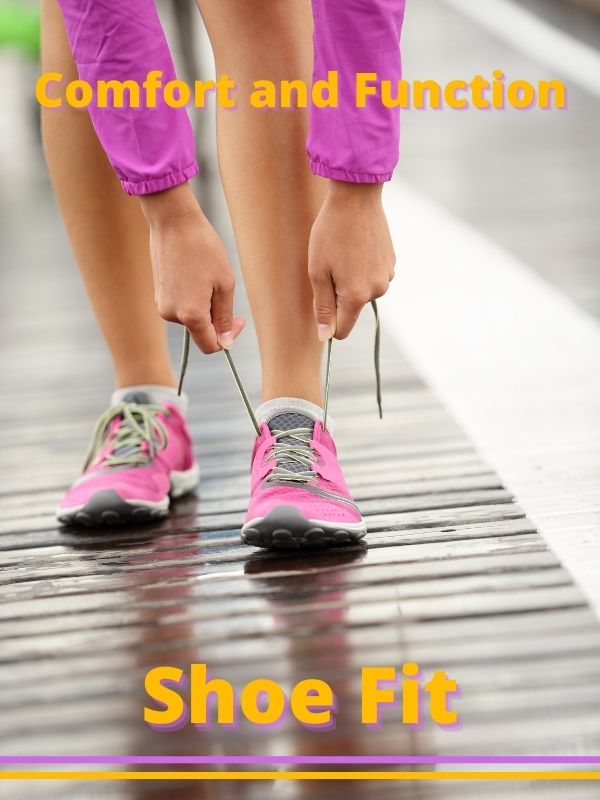
As I have already mentioned different factors, you need to consider while choosing running shoes. But if I have to select only one factor while choosing running shoes, I would say it should be how it fits.
Most shoes should feel comfortable right when you put them on. Your running shoe must fit right; otherwise, it will make your running experience painful, or it may lead to injury.
So here are 11 tips for getting the right running shoe fit.
- Always try shoes at the end of the day because feet usually swell during the run or throughout the day.
- So when you try shoes in the afternoon or evening, they will provide a better fit.
- To check a shoe’s fit, take the insole out of the shoe and stand on it. The size and shape of the insert should match the size and shape of your foot, and your toes shouldn’t spill over.
- If you accidentally bought a shoe that’s too wide, using thicker socks or an additional insole may help. Although it’s best to return your shoe if you can.
- Put the insole back in the shoe and put the shoes on. Lace the shoe snug to lock your foot in but not so tight that your nerves and blood vessels are constricted.
- There should be room to slide a finger between the knot and the shoe. Stand up and check the fit and feel.
- It’s always advisable for the perfect fit to leave about a thumbnail’s worth of width between your longest toe and front of the shoe (1/2 inch +).
- This extra space will protect your toes from hitting the shoe on downhill runs and give room when your feet swell.
- While choosing the right fit, look for the right width. Some shoes are available in a wider or narrower size.
- For women, standard shoe widths are B, and for men, it’s D. For perfect width, observe if there is any pressure on your pinky toe or any slight pressure on the big toe. If so, go wider.
- When you try your running shoes, there should be no pinching or sliding. The shoe should comfortably wrap around your foot. Your foot should be centered on the platform, and it shouldn’t feel sloppy or pinched.
- Either walk or run in the shoes you are intended to buy. Observe that the heel doesn’t slip, and nothing rubs or pinches against your ankle.
- Think about what socks you use while running. This may sound silly to you, but it does make a big difference to the fit and feel of the shoe. Whenever you go for a shoe-fitting, wear the socks that you intend to run in.
- You can buy yourself a good pair of technical running socks specially designed with extra padding and added arch for better impact protection.
- Another important tip for getting the right running shoe fit is knowing how much cushioning you need.
- Whether you are training for a marathon or trying to beat your 10k record you will need cushioned shoes for long distances, and for shorter distances, you’ll probably want a lightweight more flexible training shoe.
- Investing in a good pair of running shoes is something important, so you should always test them before purchasing them for a proper fit.
- Checking them on a carpeted floor won’t give you that fit and feel. To get the actual feel and response, you should take it for a test run on in-store treadmills.
- Getting the right running shoe fit function is the most important feature rather than fashion. Do not go for the latest trends and brands because of their popularity.
- Though a brand name running shoe does matter only for ensuring that you get the right fit, comfort, and functionality. Different brands have a slight difference in sizes and fit, so make sure to check them properly before buying.
- Check the fabric of the upper; if it stretches when you put it on, you may need to get bigger shoes, and if it’s loose, then you might need a snugger shoe.
- Check the width of the shoe to make sure it matches your foot size. You could have accidentally gotten a non-standard width.
Take Away
Just as there is a shoe for every runner, there is a shoe for every foot. In this article, I have tried to cover all the details you may need while buying running shoes for women, whether it’s a neutral shoe, wider toe box, heel-to-toe drop, or controlling your foot roll.
I hope this article has helped you in some way. Thanks for visiting Helpshoe.com
References
https://www.runningwarehouse.com/learningcenter/gear_guides/footwear/how_to_pick_running_shoes.html
https://www.on-running.com/en-us/articles/when-to-replace-your-running-shoes
https://www.runnersneed.com/expert-advice/gear-guides/choosing-the-right-running-shoes.html
https://www.runnersworld.com/training/a28172274/running-shoe-size/
https://www.runnersworld.com/uk/gear/shoes/a776160/best-womens-running-shoes







